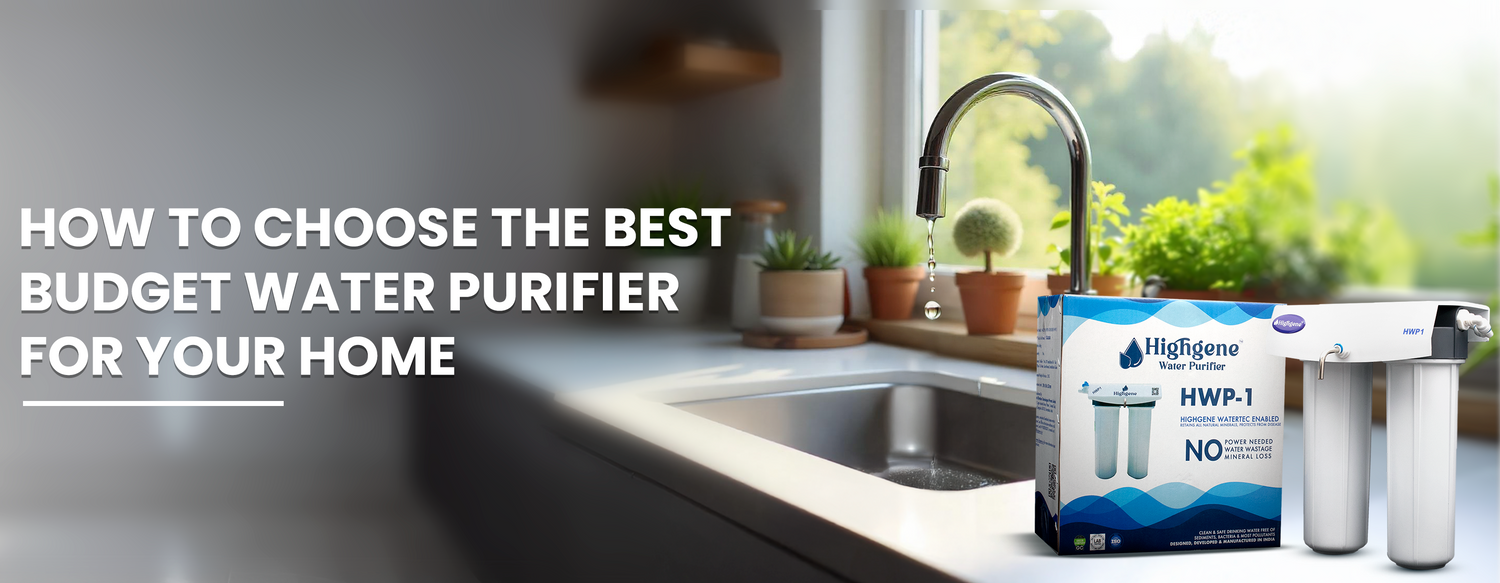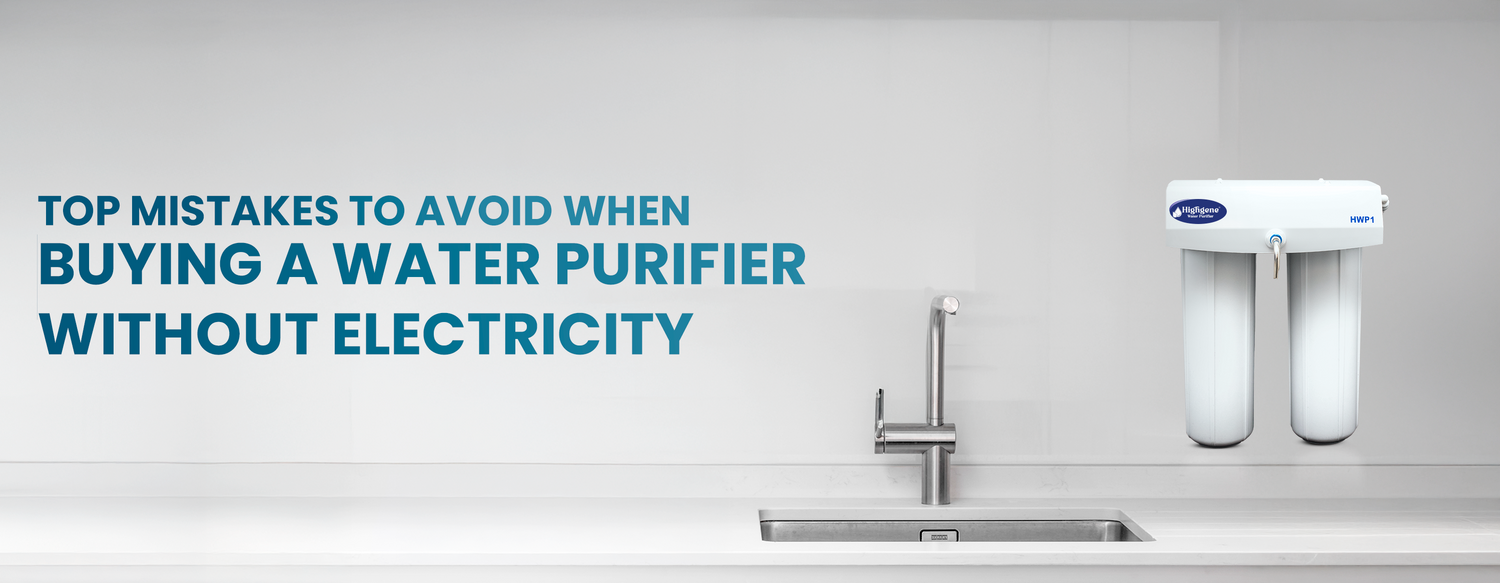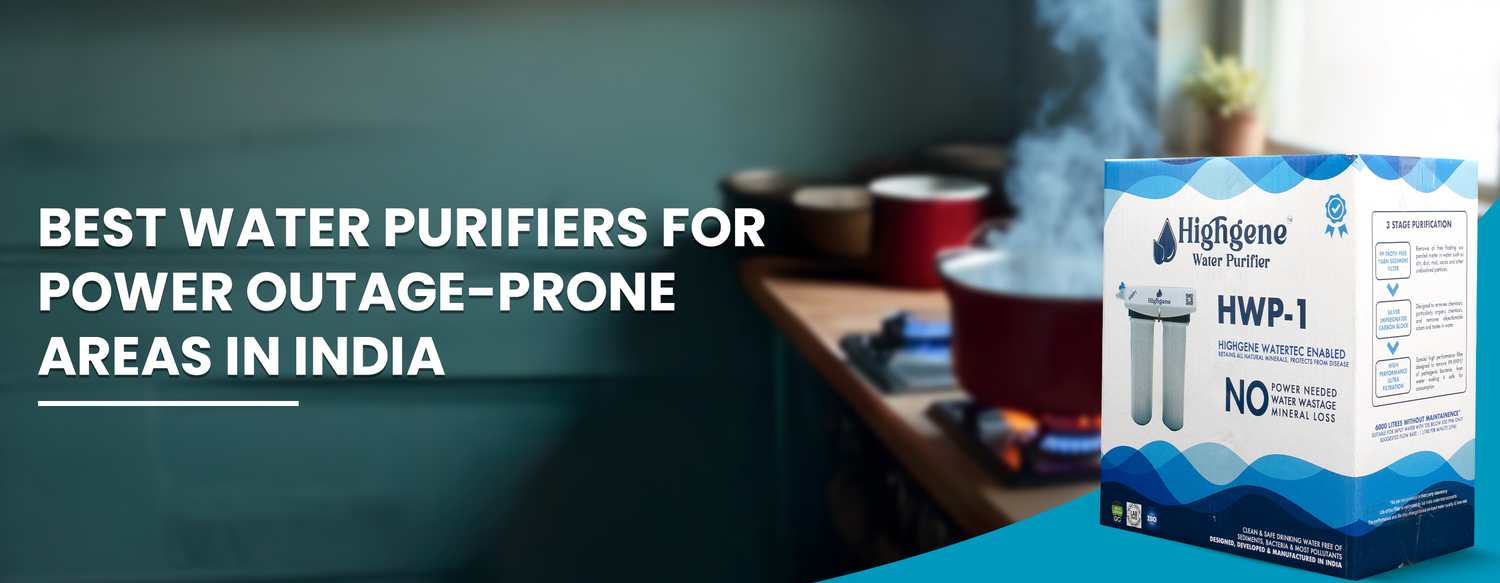Although tap water may seem clear, it frequently contains unseen contaminants that could harm your health. Water contamination with particles, metals, minerals, salts, gases, and microorganisms of very minute particle sizes is revealed by microbiological investigation; visual inspection alone cannot verify the cleanliness of water.
Waterborne illnesses like cholera and infections can be brought on by these contaminants. Intestinal cancer has occasionally been linked to elevated chlorine pollution. High levels of iron and fluorine can harm teeth and bones as well as induce gastrointestinal problems. Additionally, drinking acidic water can lead to a variety of health problems, which is why it must be changed to an alkaline form.
The Need for Water Purification
Investing in the right water purifier is now a priority to safeguard the health of your family, especially if homes are inhabited by children, elderly citizens, or individuals with weakened immune systems who are prone to infections due to contaminated water. An ideal purification unit is capable of eradicating toxic pesticides and eliminating dangerous microorganisms.
For most families, a non electric water purifier provides the perfect combination of efficiency and convenience, particularly in regions subject to regular power failures or in areas where conserving energy is paramount.
Water Purification Technologies in the Market
Let's discuss the dominant technologies employed in water purification to assist you in choosing what solution best suits your particular needs:
-
Sedimentation:
Sedimentation is a process that is dependent on gravity to filter out solids from liquids. In a sedimentation purifier, dirty water is poured into a tank or vessel where it is left still for a time. During this time the heavier particles fall to the bottom by the force of gravity. Once settled, the clearer water (supernatant) is then poured off from the top very slowly, leaving the sediment on the bottom.
- Ideal Application: It is best used for water having high suspended solids (sand, silt, clay), e.g., borewell water or surface water of rivers or lakes. These water purifiers are typically low-cost options that take little material and technical expertise for installation and maintenance.
-
Activated Carbon Filtration:
This technology removes organic impurities and separates chlorine by adsorption methods. Sub-micron filtration, a sophisticated carbon filtration method, uses a microporous screen filter to trap particles greater than 0.22μm.
-
Ideal application: It is best suited for tap water with lower levels of TDS but bad smell and taste that is present usually due to chlorine or organic contaminants. Its low-maintenance technology makes it a favoured part of numerous non-electric water purifier kits.
-
Reverse Osmosis (RO):
RO systems use a semipermeable membrane with very fine pores (0.0001-micron) that separates water molecules from any dissolved salts, bacteria, viruses, and other microorganisms.
-
Ideal application: Ideal for borewell or brackish water with TDS levels above 500 ppm. Extremely effective against chlorine, pesticides, and heavy metals prevalent in agricultural or industrial regions. Not suitable for water-scarce areas because of the roughly 3:1 wastewater ratio since the process generally needs 2-4 gallons of wastewater per gallon of purified water. Because RO strips away necessary minerals, mineral add-ons are generally needed for home purifiers.
-
UV Technology:
UV purification employs ultraviolet light with a wavelength of around 254nm to destroy the DNA of bacteria and viruses, making them unable to reproduce and thus making water safe for consumption.
-
Ideal application: Most appropriate for water with low TDS concentration levels, since high mineral content protects microorganisms from UV, lowering efficiency. Only effective against biological contaminants and does not eliminate dissolved solids, chemicals, or sediments.
-
Ultrafiltration:
This technology utilizes a fibre membrane with a pore diameter from 0.01μm to 0.1μm and allows water passage while rejecting the larger particles as well as the microorganisms. The treatment removes 99.99% bacteria and cysts without electricity and chemicals.
-
Ideal application: Best suited where the TDS level is lesser (less than 500 ppm). Although ultrafiltration does not only remove the dissolved salts, it is most effective against microbial contamination.
Also Read: Industrial Water Filtration Application
Advantages of Selecting a Non-Electric Water Purifier
Non-electric water purifiers provide several benefits that are making them increasingly popular among eco-friendly homes:
-
Energy Conservation: They operate without electricity, keeping your carbon footprint and utility costs low.
-
Reliability During Outages: Purification of water remains uninterrupted even during power outages.
-
Minimal Maintenance: Fewer moving parts translate to less repair and replacement work.
-
Environmental Sustainability: Many of them result in zero wastage of water, unlike some RO systems.
-
Mineral Retention: Quality non-electric water purifiers retain necessary minerals that are good for health, unlike RO systems.
Highgene Water Purifier Advantage in Water Purification
If you're considering buying a non electric water purifier, the Highgene Water Purifier will stand out for its three-stage purification method:
-
Yarn Wound Sedimentation: Traps particles of over 5 microns
-
Activated Carbon Block: Eliminates chlorine and enhances taste
-
Ultrafiltration: Removes bacteria and other microbes
Combining the three distinct processes for removing different types of sediments, the Highgene water purifier has several advantages for eco-friendly consumers:
-
Does not need electricity
-
Generates no water wastage
-
Retains vital minerals.
-
Economical option as compared to other purifiers
-
Low-cost maintenance
-
Required filter replacement only once a year
-
Easier to install even in small spaces
-
Great option for homes with TDS levels less than 500 ppm
-
Removes heavy metals from input water
Conclusion
By understanding the different water purification technologies, you can make a decision based on your particular requirements for water quality. Whether you have high TDS, microbial contamination, or aesthetic complaints in terms of taste and odour, be assured that there's a solution in the market that addresses your concerns.
By considering the benefits and drawbacks of each technology, you can choose a system that maintains your family's health while complying with your environmental ethics and practicality.





